Set in Rodrigo Bueno, one of Buenos Aires’ most vulnerable informal settlements, the project proposes a modular, adaptable housing system that redefines how cities can respond to urgent human and environmental needs. By using prefabricated timber panels sourced from invasive tree species in the nearby ecological reserve, the design turns ecological waste into sustainable building material. The phased development model, combining public-private partnerships, job creation, and on-site production, enables rapid, low-cost construction while empowering local communities economically. More than housing, it is a resilient framework for dignity, adaptability, and self-sufficiency that addresses the intertwined challenges of climate migration, urban inequity, and sustainability. The prototype aims to offer a replicable model for settlement upgrades across Latin America, proving that meaningful design can thrive where it is needed most.
Project Statement
About Rodrigo Bueno in Buenos Aires
According to World Bank data, around 117 million people, 20% of the population, live in slums in Latin America (1). In Argentina, the number of informal settlements has increased by 25% over the past five years, from about 4,000 to 5,000. Slums generate over-crowded living conditions without access to clean water or electricity, have poor nutritional status, and often insufficient basic health services (2).
Rodrigo Bueno is situated on the east side of Buenos Aires, bordering the Costanera Sur Ecological Reserve and the South Atlantic Ocean. As one of the most vulnerable neighbourhoods in Buenos Aires City, Rodrigo Bueno faces precarious housing conditions, a lack of public utilities and public spaces, and widening socioeconomic gaps. Under this context, the local government initiated the social housing project and the construction of 611 new homes. However, the housing initiative only covered half of the neighbourhood, leaving the southern half of the informal settlements untouched.
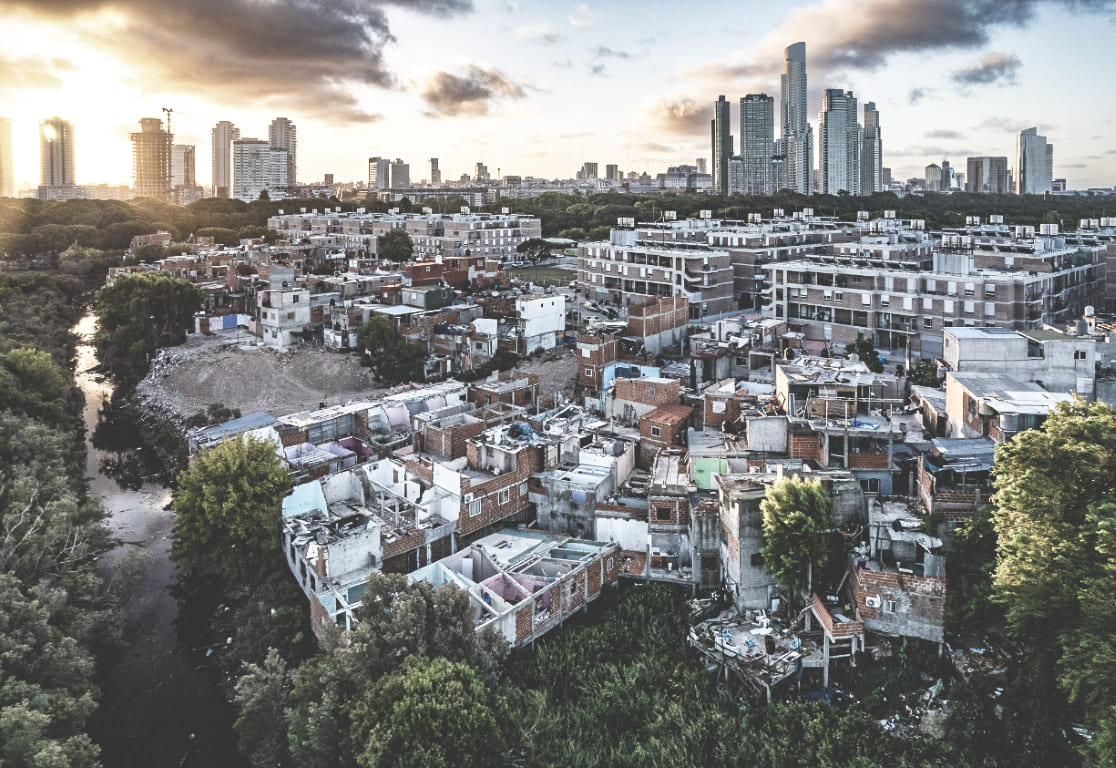
Major Challenges
Argentina has emerged as one of the most popular destinations for migrants in Latin America and over the past two decades, the country has experienced a significant influx of migrants into the capital city. At the site level, there has been a nearly twofold increase in housing units, while the number of people moving in has tripled. Given the ongoing trend of migration and the rise of climate refugees, it is anticipated that the population in Rodrigo Bueno will continue to grow. A projected 30% increase in the number of residents is expected in the foreseeable future.
The government has pursued a variety of interventions regarding slum upgrading; however, the substantial financial burden on the government, the slow pace of transformation, and the failure to help residents gain economic independence have become significant challenges to this transformation. Currently, the Housing Bureau of Buenos Aires (IVC) is fully subsidising the cost of providing new social housing in Rodrigo Bueno. The project, which took approximately 6 years to complete, provided housing for only 611 households in the northern section of the neighbourhood, at a total cost of 60 million USD.
This project aims to develop a new prototype to integrate vulnerable informal settlements into the formal city through a transitional process. The project mainly achieves the following goals:
1. Provide economic and safe housing solutions with adequate amenities
2. Offer adaptable and prompt housing solutions to accommodate future influxes of migrants
3. Fostering long-term economic viability to help residents gain economic independence
4. Enhance the sustainability and resiliency of the neighbourhood
The success of this pilot project will provide a new development mode for informal settlement upgrades that can be applied in thousands of vulnerable and marginalised neighbourhoods throughout Latin America.
Strategies
1. Phasing Strategies
To address financial and labour constraints, the project will be executed in multiple phases. In the first phase, the emphasis will be on implementing critical infrastructure and activating the core commercial space to generate revenue. In the second phase, the priority will be to adopt an affordable, environmentally friendly, and highly adaptable modular housing approach. In the third phase, the focus will shift towards providing more green infrastructure to enhance the community’s resilience and sustainability. This phase will also involve revitalising the community by activating more public spaces.
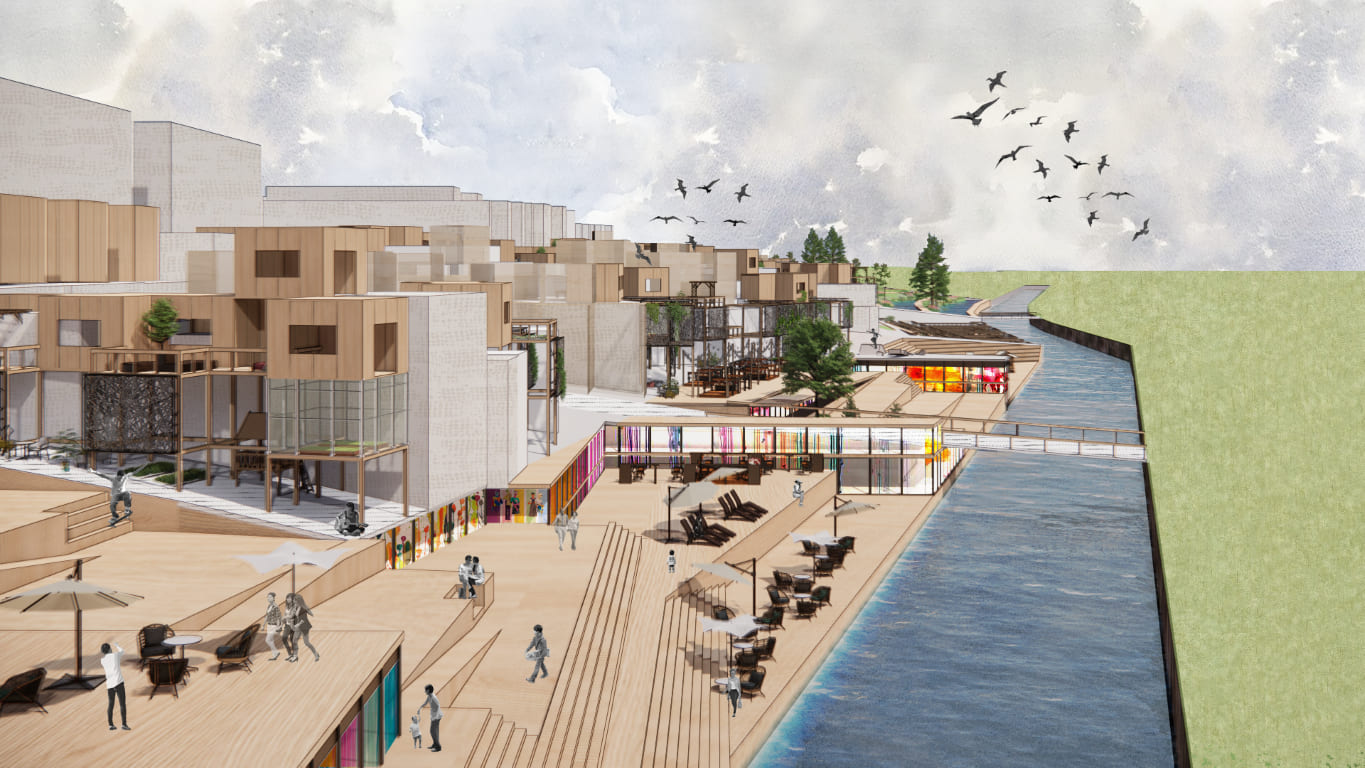


2. Modular Approach
The modular housing approach offers an appealing alternative to conventional building methods, with improved efficiency, sustainability, flexibility, and cost-effectiveness. Leveraging the site’s proximity to the adjacent nature reserve, the project incorporates prefabricated wooden panels sourced from invasive trees found within the reserve. The production cycle for these panels could take place on-site, further reducing transportation and environmental costs.
The project proposes two unit sizes, which can be configured in various combinations to create apartments that accommodate individuals, nuclear families, and extended families. These units can be stacked up to four stories high, providing ample housing options within a compact footprint. By using sustainable materials and a streamlined manufacturing process, the modular housing strategy offers a promising solution for improving living conditions in informal settlements while promoting environmental sustainability.
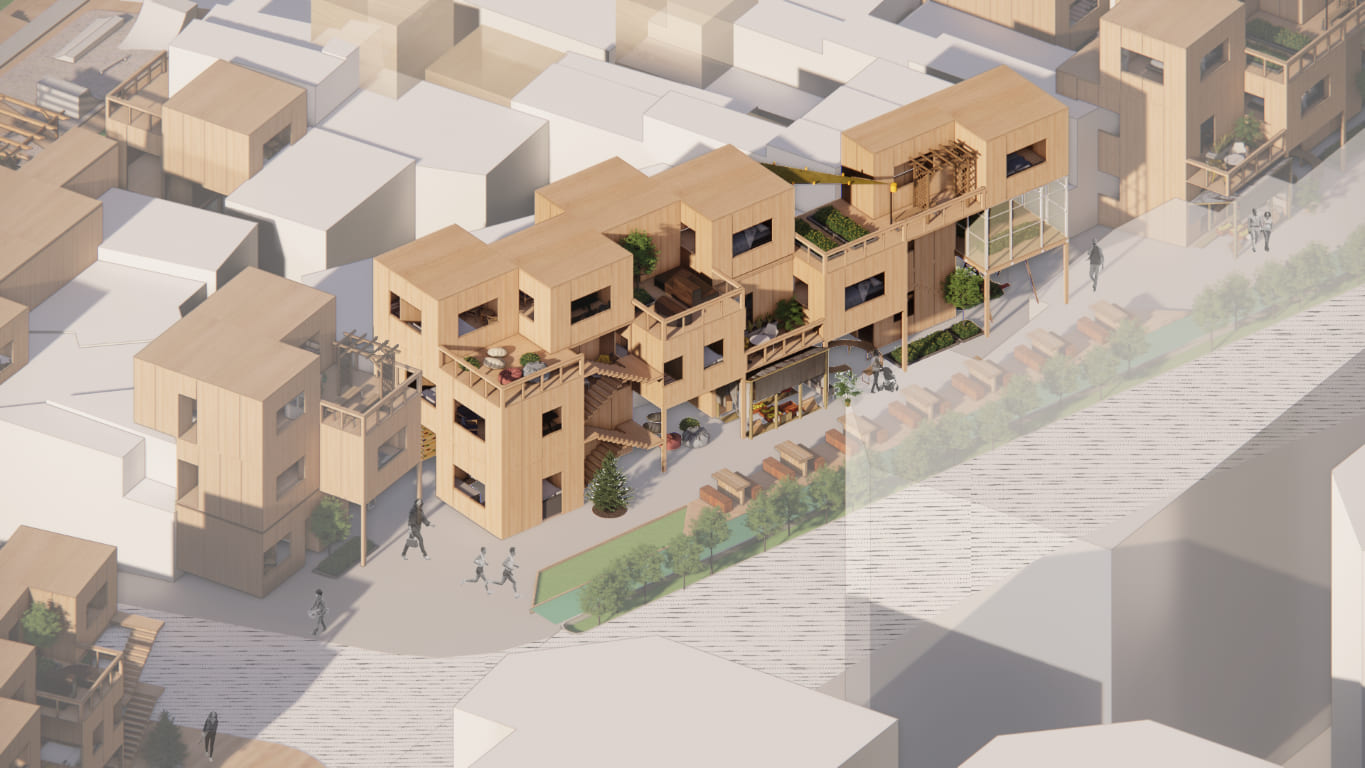
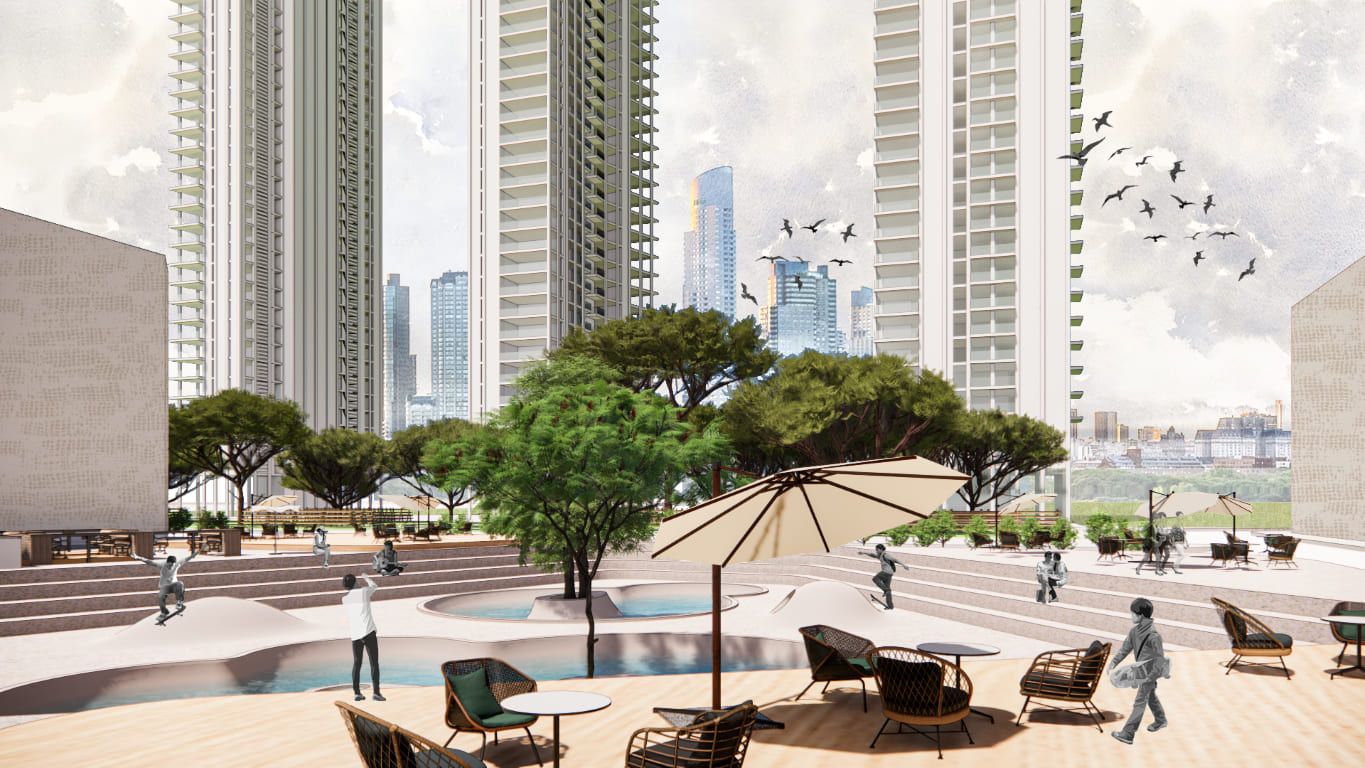
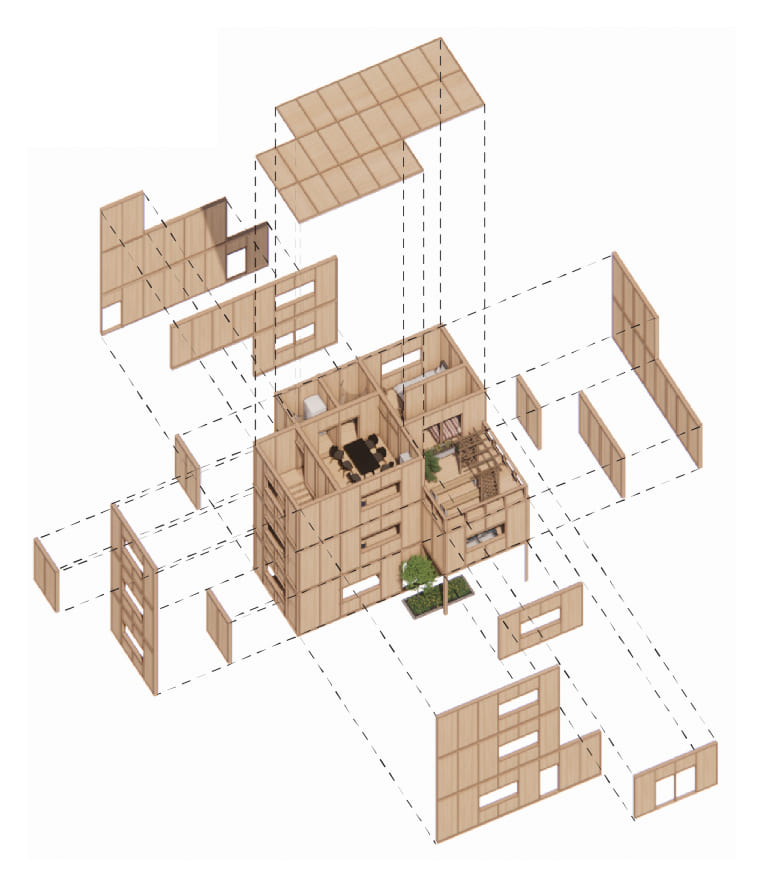
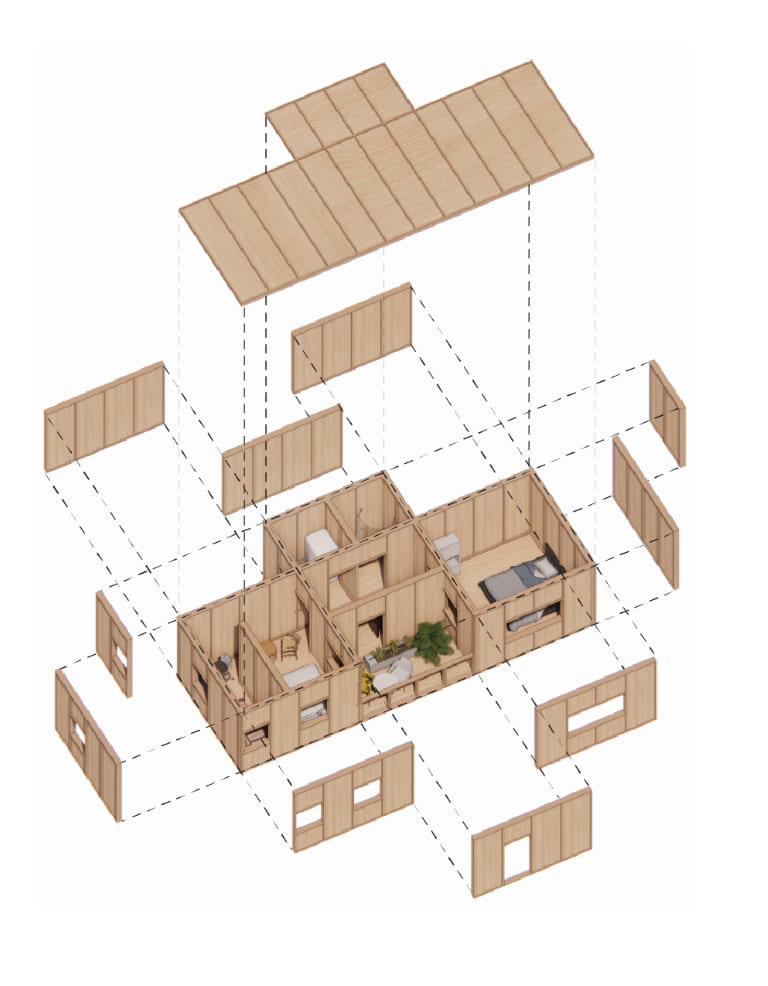
3. Public-Private Partnership
This project is financially feasible in terms of the capital required to produce it and the revenue it can generate to cover its operating costs and debt service. The Rodrigo Bueno Communities will include three programs: Market-rated Apartments, Affordable Apartments, and Waterfront Retail. Using the Public-Private Partnership (PPP) model, this proposal can achieve public and social benefits while maintaining financial viability. PPP is currently in its early stages of implementation and practice in Argentina. In 2016, National Law N 27328 established the PPP model. Since then, the Municipality of Buenos Aires has started deploying PPP models within its jurisdiction. Our project sought consultation from Centro for Transferencia de Cargas and Barrio Olimpico as precedents to contextualise the financial sources and project deployments.

More than housing, this is a resilient framework for dignity, adaptability, and self-sufficiency that addresses the interconnected challenges of climate migration, urban inequity, and sustainability. The prototype aims to serve as a replicable model for settlement upgrades across Latin America, proving that meaningful design can thrive where it is needed most.
Created by designers Mengyu Zhao, Siqi (Joyce) Zhu, and Yihan Liu, the project was recognised as one of the Top 5 winners of the 2023 Plimpton-Poorvu Design Prize at Harvard University’s Graduate School of Design.
Citation
1. The World Bank Data, https://data.worldbank.org/indicator/EN.POP.SLUM.UR.ZS?locations=ZJ
2. Natalia Machuca, Latin America’s Slums and TB, https://blog.usaid.gov/2013/03/latin-americas-slums-and-tb/
Photos and visuals courtesy of Mengyu Zhao.
Posted as part of D5 Digital Design Week 2025: This year’s edition spotlights “Design Where It Matters Most”, a reminder that smart design isn’t just aesthetic, it’s a lifeline. From emergency shelters to solar-powered lights, we’re looking at work that responds to real needs with creativity, care, and impact. The project featured above is a powerful example of how design can step up when it matters most, offering practical solutions without losing sight of human dignity.









